- Simplify Your Message
- Posts
- Your Website Isn't Converting Because You're Doing Psychology Wrong
Your Website Isn't Converting Because You're Doing Psychology Wrong
Here's the uncomfortable truth: Most people think good design sells. They're dead wrong.
You know what actually sells? Understanding how your visitor's brain works in those crucial 3 seconds before they bounce.
While everyone's obsessing over color palettes and animations, I'm reverse-engineering the psychological triggers that make people click "buy now" instead of hitting the back button.
Ever wondered why some random TikTok creator gets 10 million views while your perfectly crafted content gets 47 likes from your mom?
It's not luck. It's psychology.
They've cracked the code on human behavior online. And today, I'm pulling back the curtain on exactly how I use these same psychological triggers on my homepage to turn visitors into buyers.
Forget everything you think you know about web design. We're going psychological warfare.
The 4-Stage Conversion Machine That's Hiding in Plain Sight
Your homepage isn't just a website…it's a psychological funnel designed to move people through four distinct mental states. Miss one stage, and you're hemorrhaging potential clients.
Stage 1: Trigger (The Hook That Haunts Them)
What most people do: Generic "Welcome to our company" nonsense
What actually works: Mirror their 3 AM anxiety back to them
My homepage hero: "Be Understood, Get Clients" + "When they don't get it, they don't buy"

The psychology: Internal Trigger Amplification. I'm not selling a service, I'm verbalizing the frustration already living in their head.
Your homework: Finish this sentence: "My user wakes up worried that..."
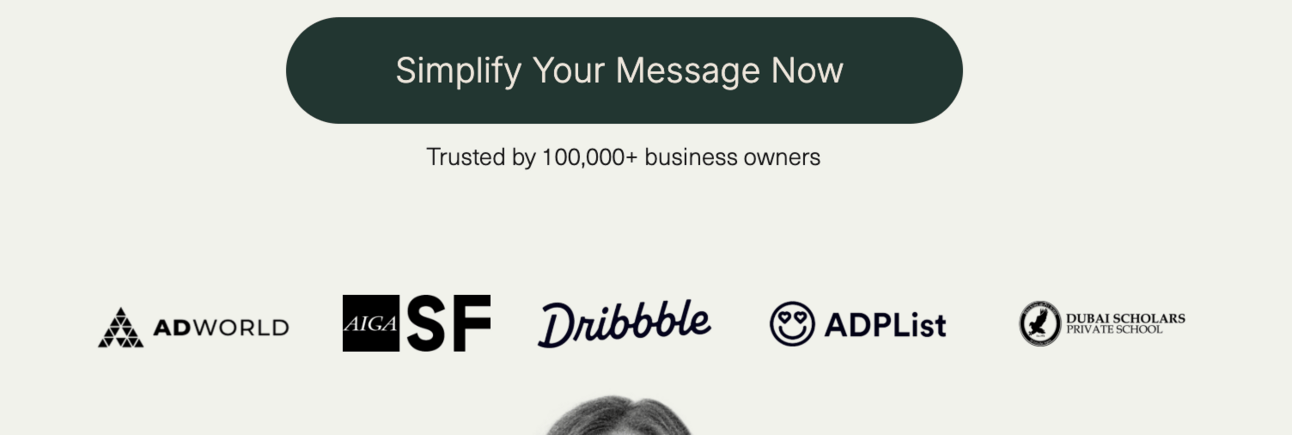
Then those social proof logos and follower counts? That's not bragging, that's Authority Bias doing the heavy lifting. Your brain sees "trusted by 100,000+" and instantly relaxes. The cognitive cost of deciding "Is this legit?" drops to zero.
The uncomfortable question: Which 3 proofs can you surface above the fold tomorrow?
Stage 2: Action (The Path of Least Resistance)
What most people do: Throw 17 navigation options at visitors
What actually works: Three choices. Maximum.
My homepage: Three "Start Here" buttons—"Done For You," "With You," "By You"
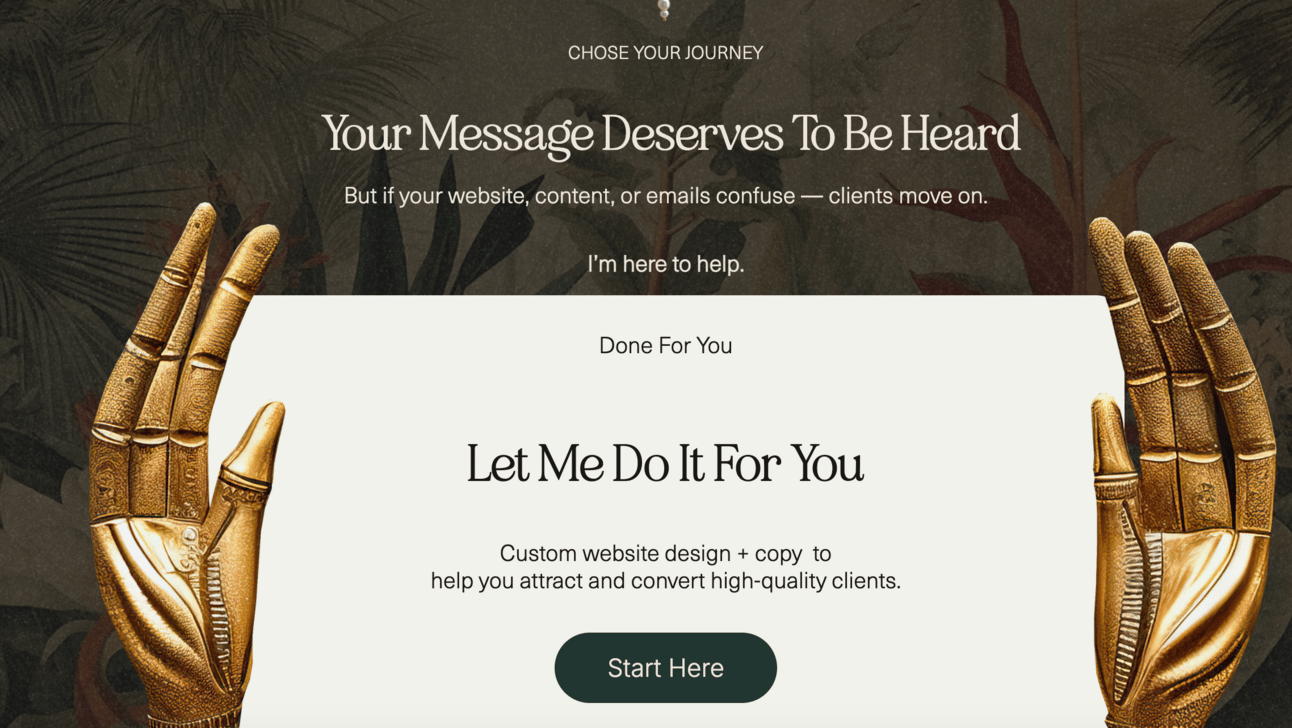
The psychology: Fogg's B=MAP model. High motivation + low friction = action. Plus Hick's Law—every additional choice increases decision paralysis exponentially.
Fun fact: Limiting choices to 3 or fewer increases click-through rates by up to 55%.
Your reality check: If your navigation has more than 3 primary paths, you're killing conversions.
Stage 3: Variable Reward (The Dopamine Trap)
What most people do: Promise the same boring content every week
What actually works: Create uncertainty about what they'll get
My homepage: "Get weekly tips to simplify your website, social media, and emails"
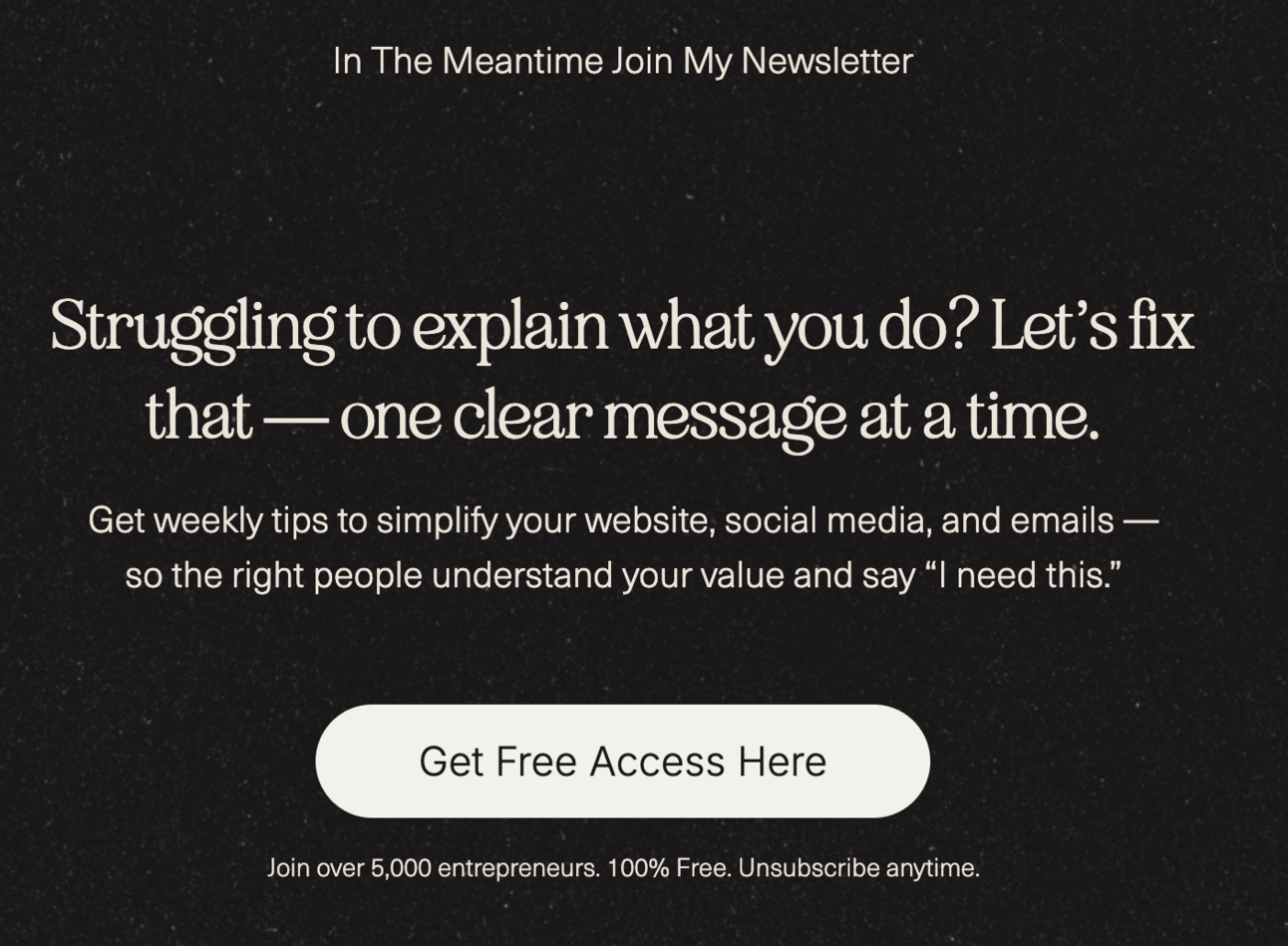
The psychology: Variable content reward. Their brain doesn't know which tip is coming, so dopamine starts flowing. Same reason slot machines work.
The secret sauce: Those updating trust counters ("5,000+ entrepreneurs") aren't just numbers—they're social comparison rewards. Heat-map studies show changing numbers draw repeat gaze.
Your action item: What "surprise" elements can you add to create anticipation?
Stage 4: Investment (The Commitment Escalator)
What most people do: Ask for email and... that's it
What actually works: Make them invest time, then reward it
My homepage: Email signup → follow-up Reward ("🎁 Choose Your Welcome Gift?")
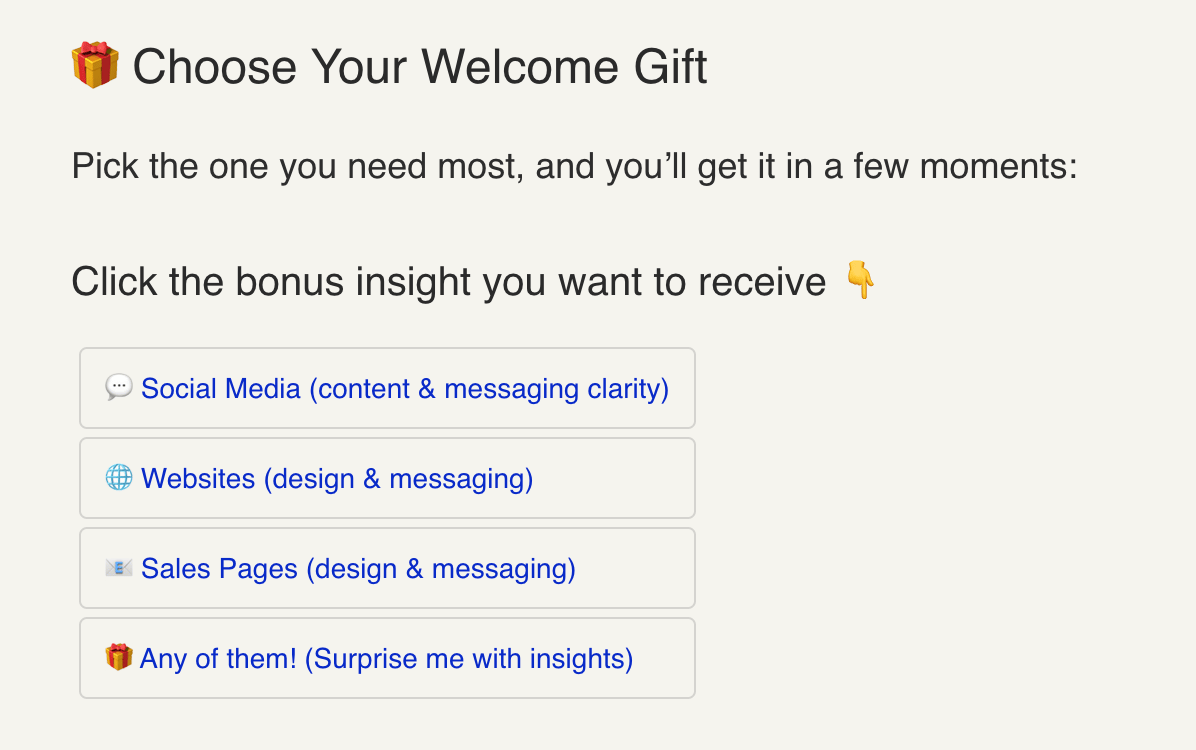
The psychology: Foot-in-the-door technique meets sunk-cost fallacy. That tiny data entry increases future engagement odds by 80%+.
Then comes the ladder: Community → Cohort → Done-For-You service. Each step raises switching costs and increases personalization.
The brutal truth: If you're not escalating commitment, you're leaving money on the table.
1. Self-Efficacy Framing My copy: "You build it. I give you the tools." Your brain hears: "This is achievable." Result: Motivation spike.
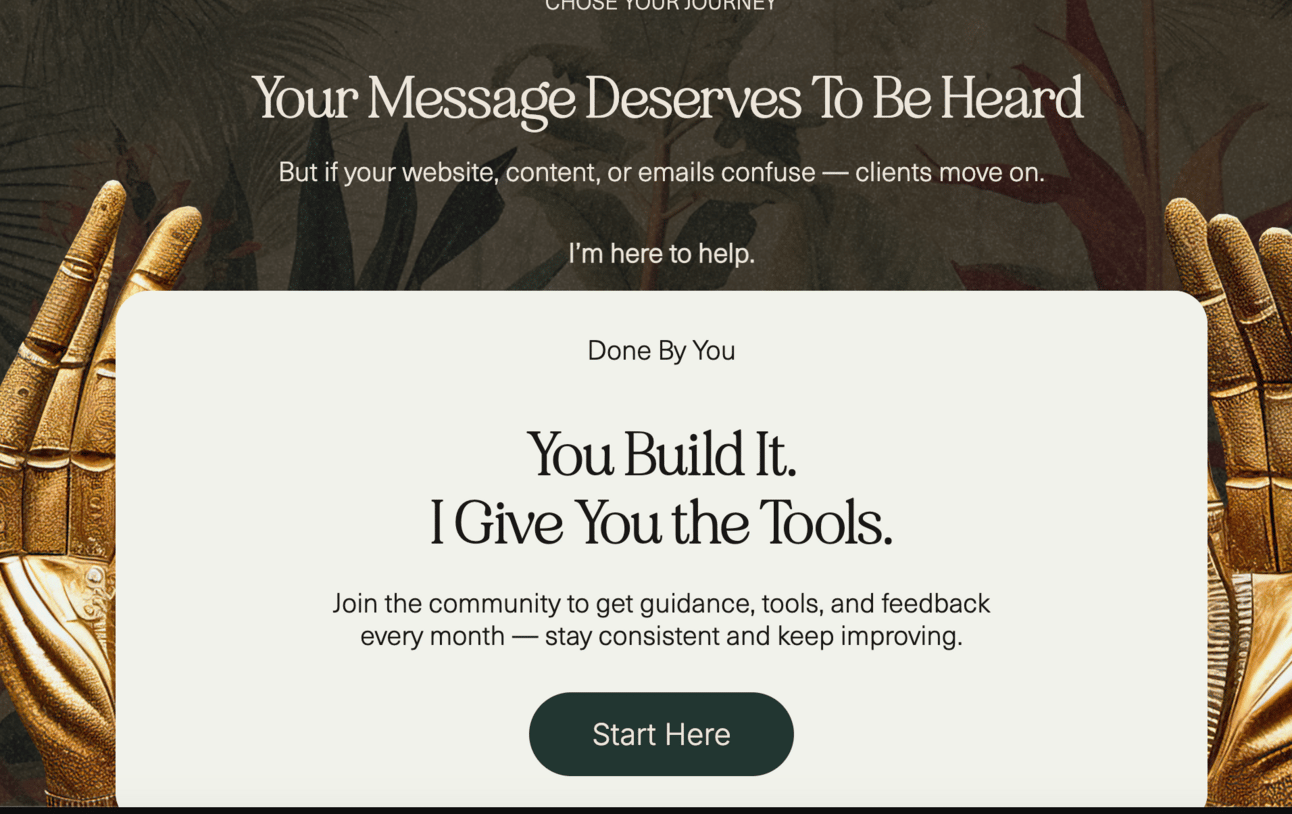
2. Future-Self Visualization "Picture this: You wake up to notifications—new followers, bookings..." Your brain: Starts simulating success Result: Desire amplification.
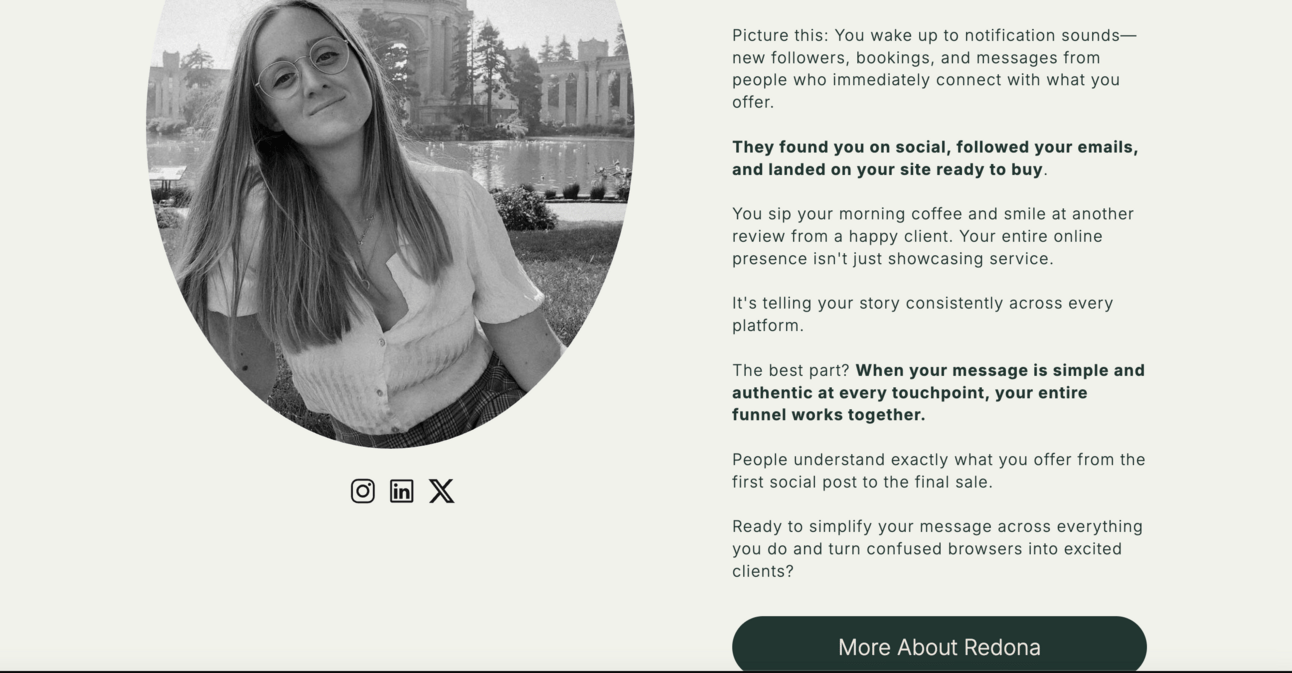
3. Reciprocity Weaponization Free newsletter = psychological debt Result: They feel obligated to upgrade.
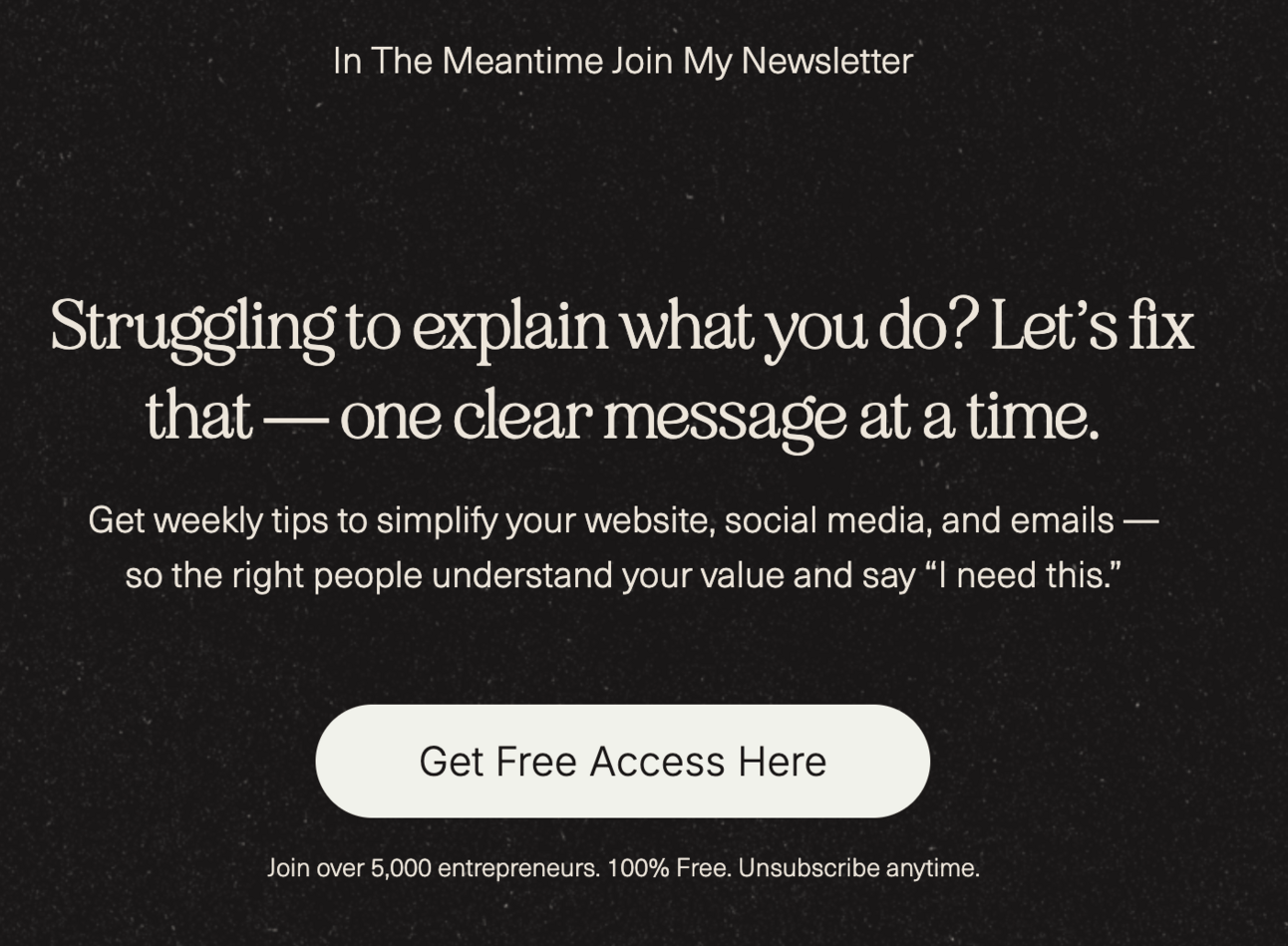
4. Authority Bias Founder photo + speaking logos (AdWorld, AIGA) Result: Credibility without having to prove it.


5. Loss Aversion Priming "When they don't get it, they don't buy." Result: Fear of missing out trumps fear of buying.
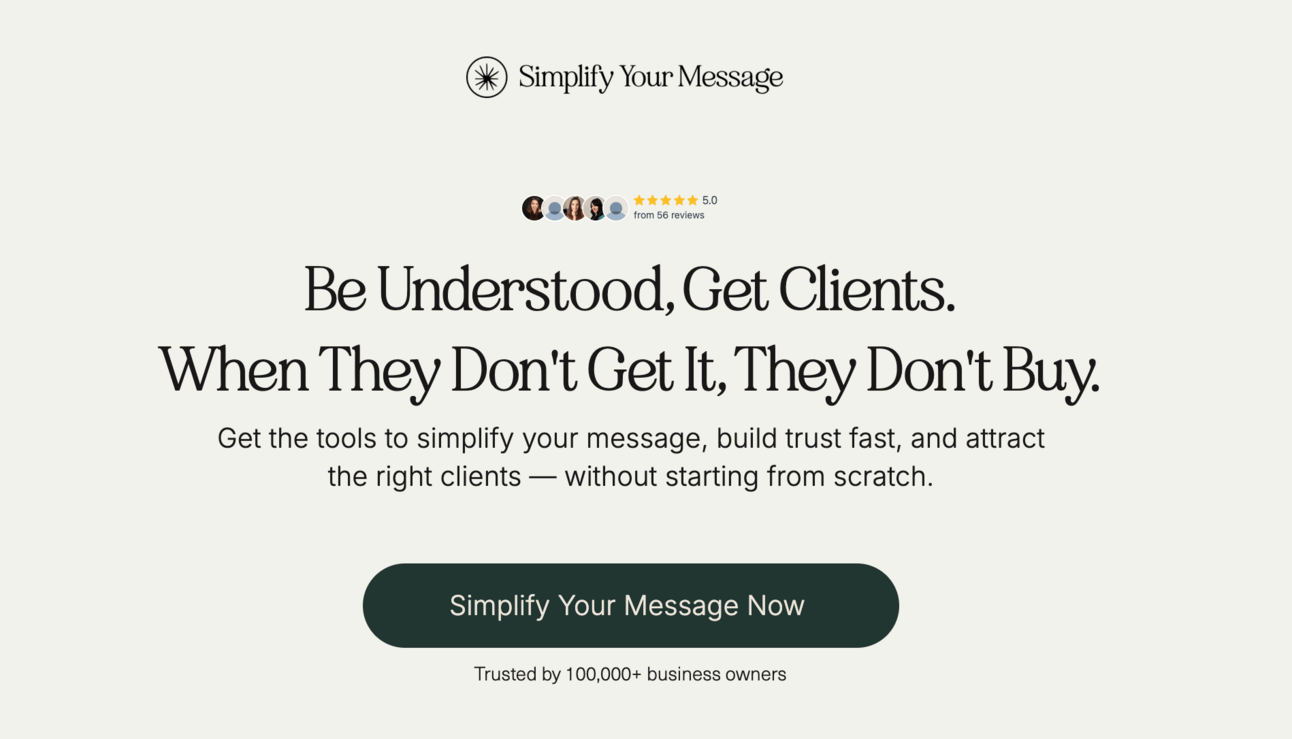
The Question Everyone Asks Me
"How do you create content that actually attracts clients instead of just likes?"
Simple: I don't create content. I create psychological experiences.
Every headline, every image, every call-to-action is designed around how your brain actually works—not how we think it should work.
The uncomfortable reality: If you don't understand behavioral psychology, you're just another pretty website in a sea of pretty websites.
The opportunity: While everyone else is playing designer, you can play psychologist.
And psychologists win.
Ready to stop guessing and start converting?
Hit reply and tell me: What's the one psychological trigger you're going to test on your homepage this week?
Because understanding people isn't just good business, it's the only business that matters.
See you next time,
Redona
Founder of Simplify Your Message
P.S. - If you think this is "manipulative," you're missing the point. Every decision your visitors make is psychological. I'm just helping you speak their brain's language.
Click the bonus insight you want to receive 👇 |